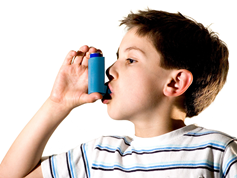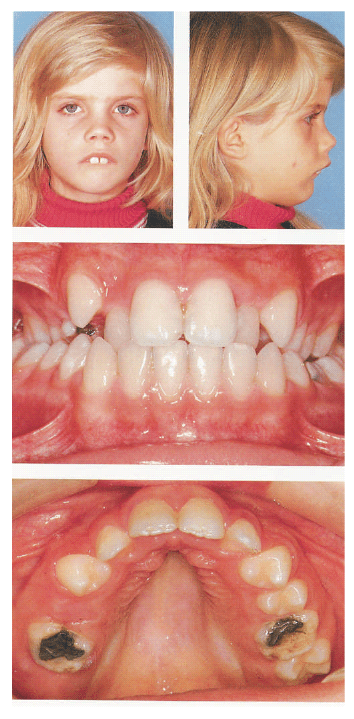The health of the airway plays a crucial role in developing the structure of the dental arches, jaws, and ultimately the structure of the face. Airway problems can impact quality of life, be it negative or positive.
Blocked airways will force sufferers to breathe through the mouth, resulting in abnormally elongated face shapes. This, in turn, will cause a constricted narrow upper dental arch (the maxilla), which in turn will cause the developing lower jaw (the mandible) to be “trapped”, resulting in malocclusion (the misalignment of the two dental arches when they approach each other as the jaws close).

However, blocked airways do not just cause physical problems but can also lead to behavioural problems in children. Breathing problems could be a contributing factor in the number of children being misdiagnosed with Attention Deficit Hyperactivity Disorder (ADHD) as well as disrupt a good night’s sleep, causing fragmented sleep and sleep deprivation. Although this initially may manifest in tiredness, eventually children will tend to become over-excited. This can also lead to poor performance at school and disruptive social behaviour.
Chronic Mouth-Breathing
The problems that can arise from chronic mouth-breathing are:
- Forward head posture (that can lead to neck muscle pain, stiffness, fatigue and cervical joint damage)
- Headaches
- TMJ (Temporo-Mandibular Joint) dysfunction
- Underdeveloped nasal passages and/or underdeveloped jaw and cheekbones
- Deviated nasal septum
- Gummy smile
- Gum disease
- Dental decay
- Dry mouth and throat
- Increased allergen/airborne infection entry to lungs
- Chronic tonsil swelling
- Enlarged adenoids (also called polyps)
- Noisy breathing
- Noisy eating
- Bad breath (halitosis)
- Excessive snoring at night

- Greater potential for relapse after orthodontic correction
- Increased mucous production
- Allergic shiners (constant dark circles under the eyes)
- Hypocapnia, which is an abnormally low level of carbon dioxide in the air sacs of the lungs and in the blood, is caused by over-breathing or hyperventilation. Responses of the body to low CO₂ due to over-breathing are:
- Increased mucous production
- Inflammation of the airways
- Bronchospasm (asthma)
- Release of histamine from mast cells (which is an allergic reaction)
- Respiratory alkalosis (which could lead to metabolic and immune dysfunction)
- Vascular spasms (such as headaches and dizziness)
- Reduced efficiency of oxygenation (resulting in fatigue)
- Sleep apnoea
- Heightened excitability in nerve cells (leading to irritability, sleeplessness, unfounded anxiety, and allergic reactions)

What causes mouth-breathing?
- Allergic reactions (including diet)
- Frequent sighing or yawning
- Thumb sucking
- Stress
- Snoring
- Blocked noses
- Panic attacks
- Breathlessness
What causes teeth to be crowded and jaws to become underdeveloped?
Neonates have their lips together and a nasal breathing pattern but by three to four years of age 80% are mouth-breathers with their lips apart. Ancient man had no malocclusion or evidence of Temporo-Mandibular Joint Disorder (TMD). The tongue posture may be a predisposing factor to TMD.
Prevention of malocclusions should start from pregnancy. Educational materials should be provided to parents teaching them the importance of properly feeding the baby to prevent oral dysfunctions which may be established during the first year of life and may directly or indirectly cause malocclusions. The correct position of the baby during breastfeeding is essential to develop nasal breathing and physiological swallowing. Correct breastfeeding allows the baby to breathe through the nose, seal the lips around the nipple and swallow properly. Incorrect breastfeeding or bottle-feeding allows the passage of air through the mouth, developing a mouth-breather and reduced activity in the lip muscles (where the lips do not seal).

The correct position for breastfeeding is for the mother to hold the baby at a 45 degree angle to the breast. When the baby’s mouth latches onto the breast, the natural sucking motion involves the baby’s tongue pushing up on the palate while the lower jaw simultaneously moves forwards and backwards. This encourages the palate to develop into a healthy palatal height and upper arch form, as well as encouraging the desired advancement of the lower jaw muscles and the TMJ.
Breathing and swallowing patterns are programmed in the brain during the first year of life. Therefore, babies should be properly fed, and bad habits have to be avoided to prevent malocclusions.
When the breathing and swallowing patterns are correct, the tongue (which is a very strong muscle) will be sitting in the correct position at rest, which is up against the palate. This will shape the palate and develop the arch of the maxilla, hence lowering the risk of malocclusion.
Sequence
Long-standing nasal obstruction can affect the skeletal growth of the skull and face (craniofacial) during facial growth in genetically susceptible children with narrow faces. This will cause two to three times more nasal resistance which will naturally lead to a higher predisposition for oral breathing. The lower jaw (mandible) will rotate downwards which causes over-eruption of the molar (back) teeth. This will cause an open bite and low tongue posture, and sometimes even tongue thrust which will open the bite even further. The pressure from the buccinator muscles (cheek muscles) leads to a constricted upper jaw (maxilla), narrow palate, cross-bite, and increased lower lip pressure resulting in the teeth tipping inwards.
Facial Development
60% of craniofacial development is complete by the age of four. 90% of this development is complete by the age of 12. Therefore, early intervention is crucial for children showing signs of chronic mouth-breathing, OSA (Obstructive Sleep Apnoea), bruxism (teeth grinding), malocclusion, etc. Co-operation between the paediatrician, ENT specialist, orthodontist, and dentist may be required.

Conclusion
There are many other factors besides airway function to consider which can affect dental-facial development (e.g. genetics, muscular tone, tooth and jaw sizes, and allergies). However, airway function plays an important role in establishing the final outcome of facial aesthetics and dental occlusion. And it all begins at the very start of life – conception!
References
- Perry, Gatekeepers of the Airway
- Paediatrics 1984: 73:622-625: Mouth breathing, nose breathing, allergy, facial development.
- Dr. C. Hansen, Snoring and Bruxism in Children: It is not All Just Noise!
- Dr. D. Mahony, The Influence of Airway on Facial Bone Development
- Meredith, Your Child’s Airway and Dentofacial Development
- Linder-Aronson, D.G. Woodside, Excess Face Height Malocclusion
